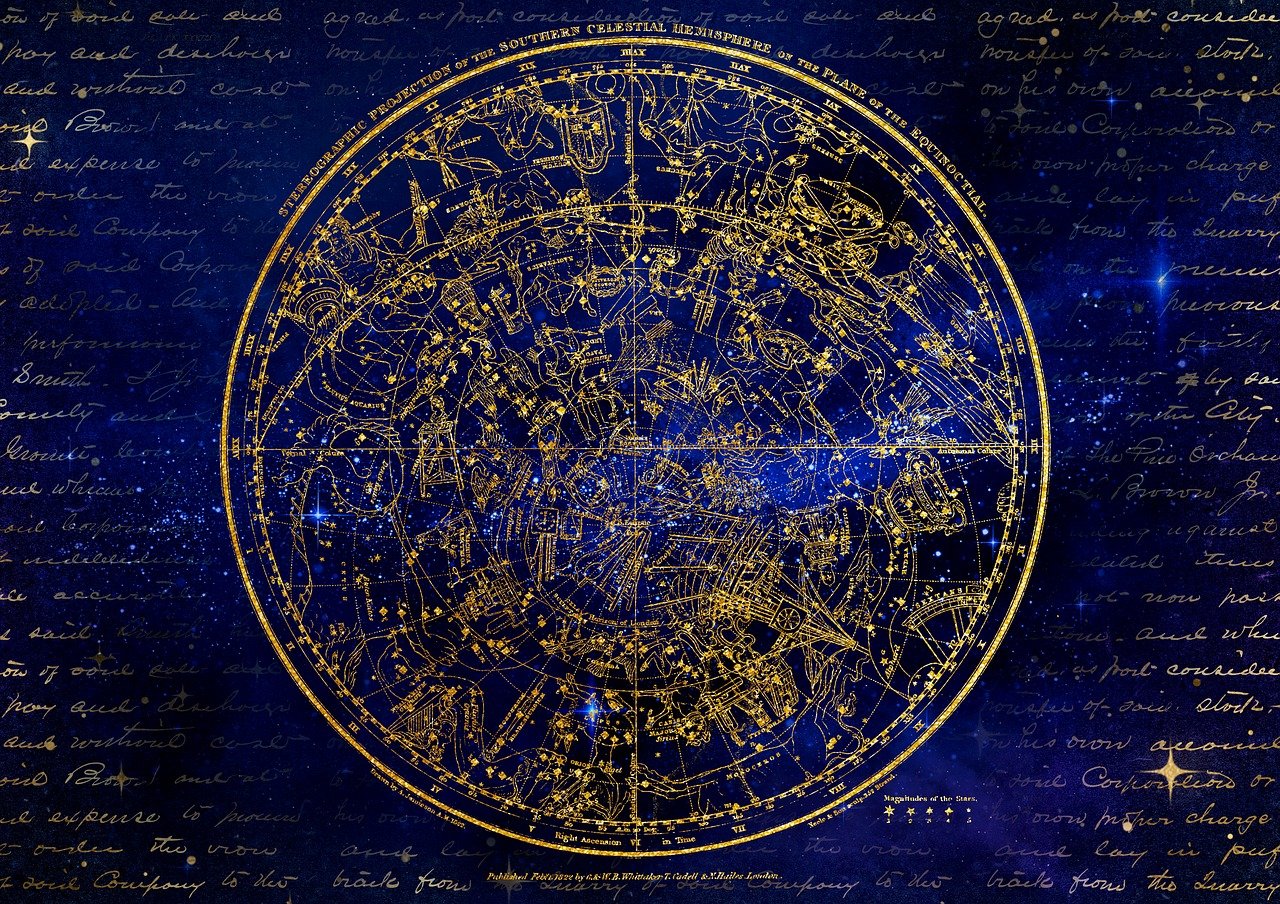If you’re living in the southern hemisphere, you get to see your own set of constellations! The most famous southern hemisphere constellation is the Southern Cross, but it’s only one of many southern constellations. Find out about other southern hemisphere constellations and their meanings below. All of these southern hemisphere constellations have been divided up into 12 zodiac signs because they fall along the ecliptic—the imaginary line that the sun follows through the sky each year as it goes from one astrological sign to another.
My Favourite Northern Skies
In my previous guide to stargazing in our night skies, I offered a brief introduction to some of my favourite constellations. When looking south we see a whole new world: one that is just as interesting and awe-inspiring as its northern counterpart. However, unlike our starry heavens at home where we have familiar stars like Ursa Major and Polaris, all of these southern stars are unfamiliar. And there’s even more than meets the eye!
South Pole Stars
The best way to find out which constellations you can see is to go outside and look for them! The stars are located within a larger circle called your celestial sphere, which defines where you are on earth. Most of these constellations can be seen from latitudes between 49 and 60 degrees south. So if you live in Melbourne, Australia or Cape Town, South Africa, you’re good to go!
Carina – The Keel of the Ship
This large, faint southern constellation looks like a jumbled up mess. It’s also known as The Keel of the Ship for its resemblance to an upturned keel of a ship. If you’re wondering why there aren’t any stars, it’s because Carina is one of two constellations that don’t have any stars above 4th magnitude.
Centaurus – The Centaur
Centaurus is one of those constellations that looks like it should be easy to spot, but isn’t. As with Orion, there are several stars that aren’t bright enough to make it stand out from other night sky objects. For some reason I find Centaurus much easier to see during daylight hours than at night, though others have trouble seeing it even during broad daylight.
Pavo – The Peacock
Is one of 22 official constellations recognized by International Astronomical Union. It’s named after a bird, not a snake like its northern counterpart, but do peacocks have any connection to Pavo? No. What does it look like, then? Like a peacock! A big, bright blue-green peacock with an eye-catching fan of feathers and his tail feathers trailing behind him. The brightest star in Pavo is Alpha Pavonis (also known as Peacock), which is also located on the back of his head.
Vela – The Sails of the Ship
Vela is a bright star that sits just to left of Antares (the heart of Scorpius). This constellation was named for a ship’s sails, and when viewed from Earth with binoculars or a telescope, looks like a ship’s sails. It also has two stars that are very close together – they appear as one to our eyes but are actually two separate stars. When you look at them through a telescope, you can see their colors clearly – blue and orange! The word vela means sails in Spanish, so it makes sense that these stars would be shaped like a ship’s sails.
Volans – The Flying Fish
Piscis Austrinus is an ancient Greek constellation named after a fish that was associated with Poseidon, who had turned himself into a fish to save his son, Pelops. It’s best known for its brightest star, Fomalhaut. Although Fomalhaut is one of eight stars in Piscis Austrinus, it’s difficult to see from northern latitudes due to its southern location and low altitude. However, if you live south of about 30 degrees north latitude, you can easily spot Fomalhaut and some other interesting deep-sky objects. In addition to being a bright blue-white star located around 25 light years away from Earth, Fomalhaut also has two planets orbiting it: one planet orbits every 467 days at a distance between 1.1 and 2.8 AU (astronomical units), while another orbits every 806 days at a distance between 3.7 and 6 AU.
Grus – The Crane
The Crane is a faint constellation found next to Pavo and Phoenix. The head of Grus lies between Beta Centauri and Alpha Arae, where Gamma Crateris marks its beak. In Greek mythology, it was said that Zeus turned himself into a crane after making love to Leda. She laid two eggs from which hatched Helen of Troy and Clytemnestra, who were fathered by her husband’s brother. However, if you’re looking for an easier way to remember what constellation you’re looking at, just keep in mind that most people think cranes look like giant storks.
Hydrus – The Water Snake (Not Visible)
The faintest of all 88 constellations, Hydrus doesn’t boast any first-magnitude stars, but it does include one end of a famous triangle. The other two corners are marked by brilliant Rigel and Betelgeuse. This constellation is easy to overlook because its stars are spread so thinly throughout southern skies during the winter months. Although you can see Hydrus with your naked eye, binoculars will help you find it more easily. It lies between Hydra (the water snake) and Vela (the sails). This small constellation has only three named stars: Alpha, Beta and Gamma Hydri.
Tucana – Toucan (Not Visible)
The toucan is a tropical bird, and it’s not visible to stargazers who live in the southern hemisphere. The constellation Tucana is made up of smaller stars than other constellations, so there isn’t as much light coming from it. It’s easy to see why it’s hard to make out anything except for one or two small stars with our naked eyes.
![]()
